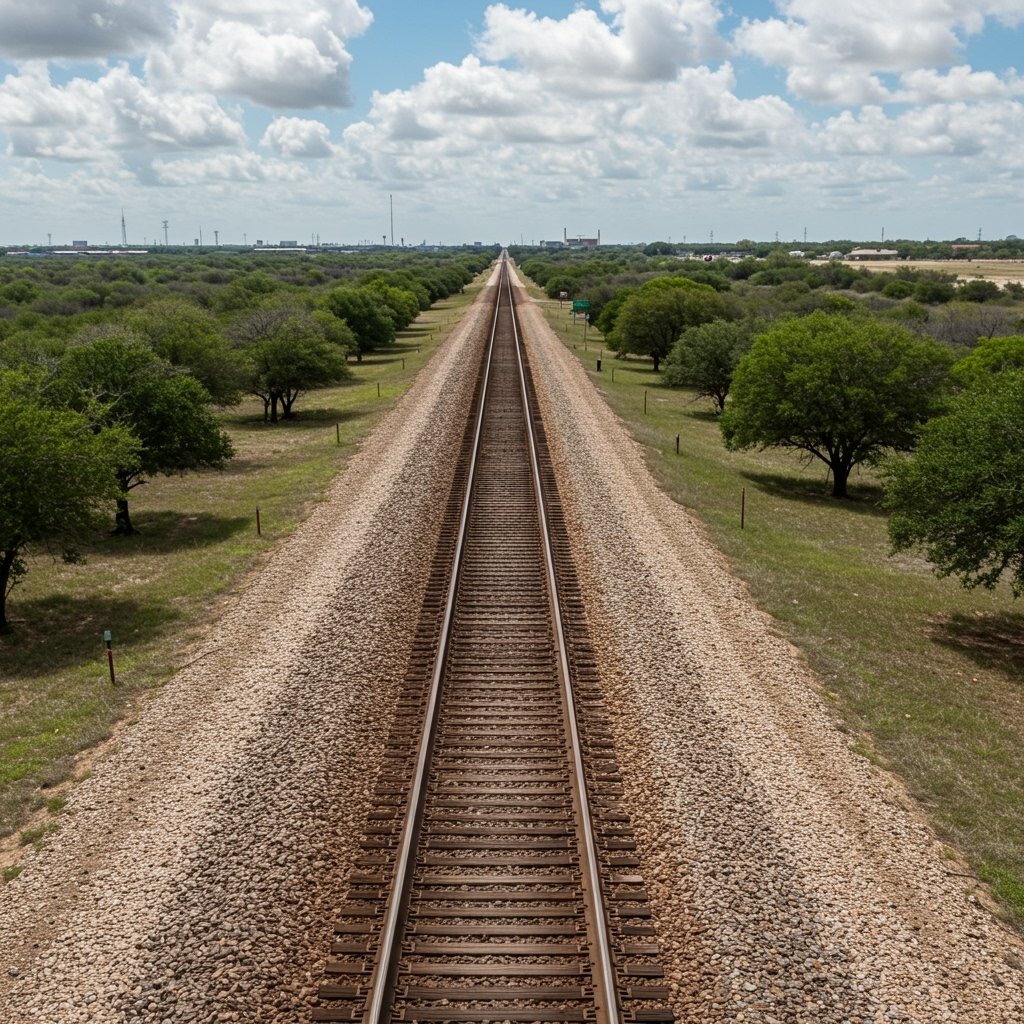Texas High-Speed Rail Project Hit With Legal Challenge Over Eminent Domain, Environmental Concerns
A significant legal challenge has been filed against the controversial Texas high-speed rail project, a proposed infrastructure undertaking aimed at connecting the major metropolitan areas of Dallas and Houston. A coalition comprising Texas landowners and prominent environmental advocacy groups initiated the action today, filing a lawsuit in Travis County District Court. The suit targets both the Texas Department of Transportation and the project developers, laying bare accusations of the misuse of eminent domain authority and the alleged insufficiency of environmental impact studies conducted for the ambitious 240-mile route.
This legal maneuver represents an escalation in the long-standing battle surrounding the project, coming on the heels of key legislative developments. Specifically, the lawsuit follows the passage of House Bill 3 (HB 3) during the 2025 legislative session. This bill, signed into law, notably affirmed the ability of private transportation entities to utilize eminent domain powers under certain conditions and state oversight, a provision opponents argue contravenes constitutional property rights and provides inadequate safeguards for environmentally sensitive areas.
Eminent Domain Dispute at the Core
At the heart of the lawsuit are fundamental questions about the scope and application of eminent domain, the power of the government to take private property for public use, provided just compensation is paid. While eminent domain is a recognized government authority often delegated for public infrastructure projects like roads and utility lines, its application to a project led by private entities, even with state oversight as defined by HB 3, remains a fiercely contested issue in Texas.
The coalition of landowners argues vehemently that granting private developers the authority to condemn private property for what they view as a commercial venture, rather than a purely public one, constitutes an unconstitutional overreach. They contend that HB 3, despite its provisions for state oversight, fails to provide adequate protection for individual property owners, forcing them to relinquish their land against their will for a project they oppose. The lawsuit in Travis County District Court seeks to challenge the legal basis upon which this power is being exercised, questioning whether the project meets the criteria for ‘public use’ necessary to justify the use of eminent domain.
Landowners along the proposed 240-mile corridor between Dallas and Houston have expressed deep concerns about the impact on their farms, ranches, and homes. Many have refused access to surveyors and have vowed to fight the condemnation process through legal channels. The lawsuit is seen by these landowners as a critical step in challenging the project’s fundamental right to acquire the necessary land, regardless of compensation offered. They assert that their constitutional right to own and hold property is paramount and should not be easily overridden by private interests, even those involved in significant infrastructure development affirmed by legislation like HB 3.
Environmental Review Under Scrutiny
Beyond the property rights debate, the lawsuit also raises serious environmental concerns. The coalition alleges that the environmental impact studies conducted for the proposed high-speed rail line are insufficient and fail to adequately assess or mitigate the potential harm to sensitive ecological areas along the 240-mile route. Texas boasts diverse ecosystems, including wetlands, critical wildlife habitats, and protected lands, which could be directly or indirectly impacted by the construction and operation of a high-speed rail line.
Environmental advocacy groups joining the lawsuit argue that a project of this magnitude requires the most rigorous environmental review possible. They contend that the current studies fall short, potentially overlooking significant impacts on waterways, migratory paths, air quality, and noise pollution. The lawsuit specifically alleges that the project developers, and by extension TxDOT in its oversight role, have failed to demonstrate how sensitive ecological areas will be sufficiently protected during and after construction. The coalition demands a more thorough and transparent environmental review process, arguing that the current approach fails to meet federal and state requirements for projects with potentially significant environmental footprints. Protecting these natural resources, they argue, is a public interest that must be weighed heavily against the perceived benefits of the high-speed rail project.
Legislative Backdrop: House Bill 3
The legal challenge is intrinsically linked to the passage of House Bill 3 during the 2025 legislative session. For years, the Texas high-speed rail project faced legal battles primarily centered on whether Texas Central Partners, the private company spearheading the effort, qualified as a ‘railroad’ or ‘interurban electric railway’ under Texas law, classifications that traditionally grant eminent domain authority. While the Texas Supreme Court previously ruled in favor of Texas Central on this interpretation, opponents continued to challenge the application of this power.
HB 3 aimed to provide clearer legislative guidance, specifically addressing private transportation entities. Its passage was seen by proponents of the rail project as solidifying their ability to use eminent domain, placing them under state oversight, primarily through the Texas Department of Transportation. However, opponents viewed HB 3 as an attempt to legislatively affirm eminent domain power for a private commercial entity, bypassing what they consider fundamental constitutional property rights protections. The lawsuit directly challenges the validity and application of the eminent domain provisions within HB 3 as they pertain to this specific project, setting up a potentially significant legal test case in Travis County District Court regarding the balance between private infrastructure development, state authority, and individual property rights in Texas.
A Long-Standing Battle Continues
The filing of this lawsuit marks the latest development in what has been characterized as a long-standing battle over the proposed high-speed rail line. From initial planning stages, the project has faced significant opposition from landowners, rural communities along the route, and environmental groups. Concerns have ranged from property rights and environmental impact to economic viability and necessity.
The project developers maintain that the high-speed rail line is a vital infrastructure project that will provide a fast, safe, and environmentally friendly transportation alternative between Dallas and Houston, alleviating congestion on I-45 and stimulating economic growth. They have consistently defended their planning processes, including environmental reviews, and asserted their legal right, now underscored by HB 3, to acquire the necessary land through eminent domain where voluntary agreements cannot be reached.
The lawsuit filed in Travis County District Court forces these competing perspectives into the judicial arena. The outcome of this legal challenge could have profound implications not only for the future of the Texas high-speed rail project but also for the potential use of eminent domain by private entities for large-scale infrastructure development across the state. As the case proceeds, arguments surrounding constitutional rights, environmental stewardship, and legislative intent will be closely examined, continuing the complex saga of the Dallas-Houston high-speed rail endeavor.






